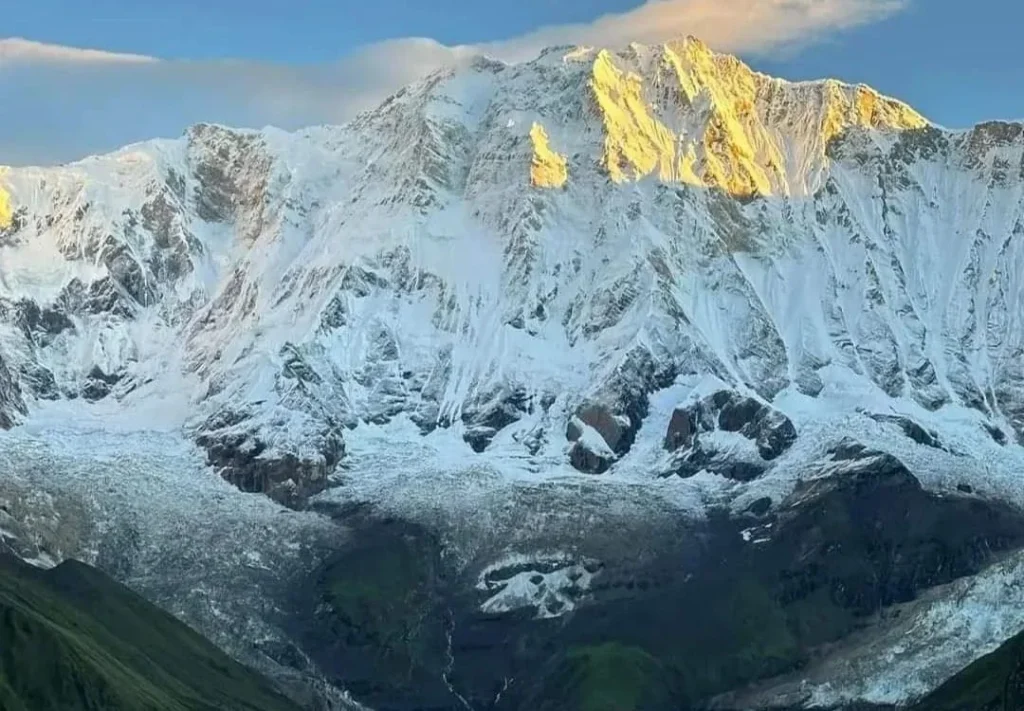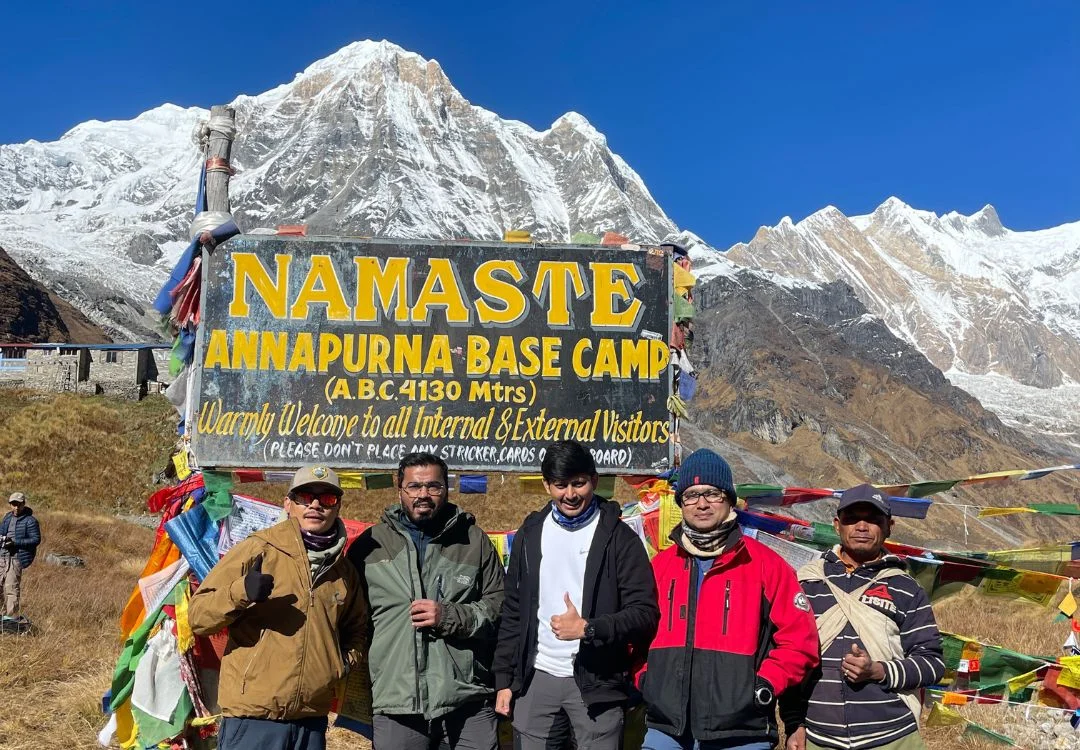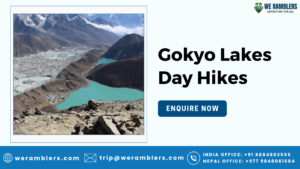Rescue During Annapurna Base Camp Trek: A Complete Guide to Emergency Support and Safety
The Annapurna Base Camp Trek, nestled in the heart of the Himalayas, is one of Nepal’s most iconic trekking routes. It attracts thousands of adventurers each year. Rising to an altitude of 4,130 meters (13,550 feet), the trek offers jaw-dropping views, cultural encounters, and thrilling ascents. But as stunning as the trail is, it comes with its share of risks, including altitude sickness, injuries, and unpredictable mountain weather. That’s why understanding the protocols and options for rescue during Annapurna Base Camp Trek is crucial for every trekker.
Whether you’re a first-timer or a seasoned hiker, knowing how helicopter rescue from Annapurna Base Camp works, what it costs, and how companies like We Ramblers ensure your safety could literally be a lifesaver.
Trip Overview: Why Rescue Is a Critical Consideration on the Annapurna Base Camp Trek
The Annapurna Base Camp (ABC) trail starts at a relatively low elevation and gradually ascends through terraced farmlands, rhododendron forests, and alpine zones. But despite the moderate start, trekkers face significant altitude gains within a short period; often reaching above 3,000 meters within a few days.
Key Challenges Include:
- Altitude-Related Illnesses: AMS (Acute Mountain Sickness), HAPE (High-Altitude Pulmonary Edema), and HACE (High-Altitude Cerebral Edema).
- Tough Terrain: Steep ascents, slippery descents, and narrow trails.
- Unpredictable Weather: Sudden snowfalls, fog, or storms can delay movement or trap trekkers.
- Physical Exhaustion: Continuous climbing with limited oxygen and cold weather adds strain to the body.
These challenges make having access to emergency evac service in Annapurna region not just a luxury, but a necessity.
Types of Emergencies During the ABC Trek
Emergency situations on the ABC trail can escalate quickly, and time is often the most critical factor in determining outcomes.
1. Altitude Sickness
The most common issue that demands a rescue from Annapurna Base Camp is Acute Mountain Sickness (AMS). Early signs include headache, nausea, dizziness, and fatigue. If ignored, AMS can progress to HAPE or HACE, both of which require immediate descent and often helicopter rescue.
2. Injuries
Twisted ankles, fractures, or falls can occur on narrow, slippery sections of the trail. Injuries are particularly dangerous if they happen in remote areas where ground evacuation is difficult.
3. Exhaustion and Dehydration
Many trekkers underestimate the energy needed for high-altitude trekking. Dehydration, low calorie intake, or overexertion can cause serious fatigue, halting progress or necessitating evacuation.
4. Sudden Weather Changes
The Annapurna region is notorious for sudden weather shifts. Heavy snowfall or landslides may block trails, leaving trekkers stranded and in need of helicopter rescue from Annapurna Base Camp.
Helicopter Evacuation Services: How Rescue from Annapurna Works
When things go wrong, helicopter rescue from ABC becomes the fastest and safest option. But the process involves multiple moving parts.
How It Works:
- SOS Initiation: Trekkers or guides contact the trekking agency via satellite phone or local network.
- Assessment & Permission: Medical symptoms are assessed by trained staff. Evacuation is initiated only if deemed medically necessary.
- Insurance Confirmation: Insurance providers are contacted for authorization and guarantee of payment.
- Rescue Coordination:
- A helicopter is dispatched from Pokhara or Kathmandu.
- Ground crew helps identify the landing spot (usually a helipad or open terrain).
- The injured or ill trekker is airlifted to a hospital.
- Hospital Transfer: Depending on severity, trekkers are flown directly to Kathmandu or to Pokhara for treatment.
Timeframe:
- From ABC, helicopter rescue typically takes 30 minutes to reach Pokhara and 1.5 hours to Kathmandu, depending on weather.
Insurance and Cost of Helicopter Rescue During Annapurna Base Camp Trek
Travelers are required to purchase travel insurance for Annapurna Base Camp rescue before arriving in Nepal. This insurance should explicitly include high-altitude trekking and helicopter evacuation above 4,000 meters.
Key Points to Know:
- Helicopter rescue from Annapurna Base Camp package can cost $3,500–$5,500 depending on pickup location and hospital destination.
- Insurance should have:
- Emergency medical evacuation coverage.
- High-altitude trekking up to 6,000 meters.
- Repatriation.
Claims Process:
- Submit documents like trekking permits, doctor’s note, rescue report, and flight bills.
- Insurance companies typically reimburse post-treatment.
Trekkers must verify Annapurna Base Camp rescue cost coverage with their insurance provider before the trek.

We Ramblers’ Emergency Evacuation Support
At We Ramblers, trekker safety isn’t just a service; it’s a mission. With years of field experience, our team ensures that every trek has emergency protocols in place from day one.
Here’s how We Ramblers leads in emergency evac service in Annapurna region:
- 24/7 Emergency Support: Round-the-clock readiness for emergencies.
- Trained Guides: All guides are first-aid certified and experienced in handling high-altitude illness.
- Satellite Phones: For immediate contact in no-network zones.
- Rescue Coordination: We work directly with helicopter providers and hospitals to streamline evacuation.
- Hospital Partnerships: Connections with top facilities in Kathmandu and Pokhara for swift treatment.
Coordination with Authorities and Local Advisors
Rescue operations aren’t carried out in isolation. A successful rescue from Annapurna region involves collaboration with:
- TAAN (Trekking Agencies’ Association of Nepal): Helps verify trekkers’ details and permits.
- Nepal Police & Army: Assist in search and rescue in case of severe emergencies or missing trekkers.
- Local Guides and Porters: Provide real-time updates and help secure landing zones for helicopters.
- Hospitals: Ready to receive and stabilize rescued trekkers.
Proper documentation protocols (TIMS card, permit copies, insurance papers) are crucial for smooth rescue execution.
Tips to Avoid Needing a Rescue
Prevention is the best form of protection on any trek. Here’s how to reduce the chance of needing a rescue during Annapurna Base Camp trek:
Acclimatize Smartly
- Follow the “climb high, sleep low” strategy.
- Include at least one acclimatization day after 2,500 meters.
Stay Hydrated & Nourished
- Drink at least 3-4 liters of water per day.
- Don’t skip meals; your body needs fuel at altitude.
Pace Yourself
- Trek slow and steady.
- Avoid racing to higher camps — the faster you ascend, the higher the risk of AMS.
Communicate
- Always report headaches, nausea, or fatigue to your guide.
- Be honest about how you’re feeling — early intervention prevents evacuation.
Frequently Asked Questions (FAQs)
Q: What happens if I need a rescue and don’t have insurance?
You’ll need to pay the full Annapurna Base Camp rescue cost upfront, which can be $3,500–$5,500. Without payment or insurance, helicopters won’t be dispatched except in extreme humanitarian cases.
Q: Can helicopters land directly at Annapurna Base Camp?
Yes, there are suitable open areas around ABC where helicopters can land, weather permitting.
Q: How long does a helicopter rescue take?
From call to lift-off can take 1–3 hours. From ABC to Kathmandu: 1.5 hours flight time.
Q: Will I get a refund for the rest of my trek if evacuated?
That depends on your trekking company’s policy.
Q: What if the weather is bad?
Rescue may be delayed if visibility is poor. In such cases, on-ground care and descent by foot/mule may be arranged temporarily.
Trek Smart, Trek Safe with We Ramblers
Trekking to Annapurna Base Camp is an adventure of a lifetime; but it’s also a high-altitude expedition that requires planning, awareness, and the right partners.
With We Ramblers, you’re never alone in the mountains. From trained guides and emergency evac service in Annapurna region to reliable helicopter rescue from Annapurna Base Camp, our team ensures you’re safe, informed, and supported every step of the way.
So pack smart, get insured, listen to your body, and leave the rest to us. Contact us today for detailed information.





